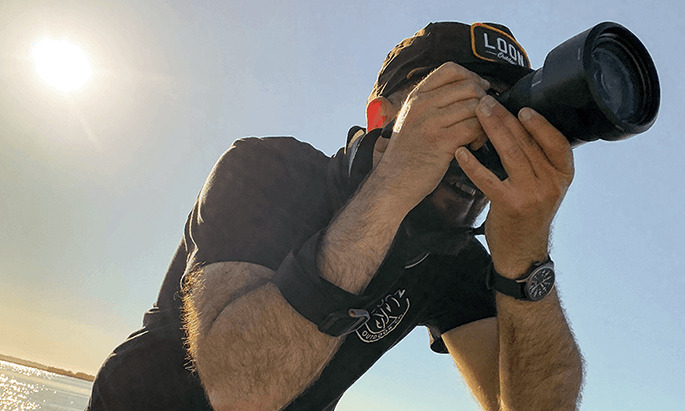Okefenokee: Land of The Trembling Earth


Written by Henry Hooks of Tall Tails Media
A little over a year ago, I was repeatedly urged by one of my closest friends to skip my own wedding. No, it was not because he did not support my marriage, but because the date that we had chosen for holy matrimony lined up with the date of a fishing trip that had been planned for years. Needless to say, he and another good friend of ours were absent on my wedding day to pay a visit to a place they described as something out of a Tolkien story. A place so full of wonder and teeming with life that the urge to return year after year felt more a compulsion than a suggestion.
Across the entirety of the United States there are 12 natural UNESCO World Heritage Sites. These natural wonders have been internationally recognized as having “outstanding universal value” and thus have been protected for generations to come. Deep in South Georgia, near the border of the Florida panhandle, lies a 438,000 acre refuge of wildlife, ecology, and beauty that is in the fight of its life between UNESCO designation and mining desolation. An often-overlooked gem, boasting one of the most biodiverse environments on the planet, and home to numerous endangered and threatened species; the Okefenokee National Wildlife Refuge sits, nearly wholly unblemished by human intervention. But as much as the park feels like a trip back to a time before the modern world, it is also the habitat to one of the most remarkable freshwater fish in the United States. The bowfin (amia calva) is a living fossil, a dinosaur of the swamp, a reminder that life existed on earth long before we did: that there are creatures more readily adapted for survival on this planet than humans could dare dream. But beyond all that, bowfin are a fish that will challenge and humble even the most seasoned angler with their prehistoric strength and unique ferocity.

A year after my wedding, with the greatest day of my life no longer hindering a trip to the swamp, I loaded up the car and began the nearly eleven-hour journey south. I knew of the swamp only through photographs and stories they had shared, so it was with heightened anticipation that I rallied for the long drive. As the hours wore on, I found it harder to both remain vigilant on the road and to retain the same level of excitement that had recently been so captivating. I called friends, family, and of course my wife in the fight to stay awake, and I sought to keep the conversation geared toward the thrill of a new experience and the potential of a new fish on the fly.
As we entered the park, the chorus of wildlife grew ever louder, slowly drowning out the noise of the highways that had led us there. The jet-black water of the swamp was made all the more eerie by a scaly pair of eyes peering up at us from the abyss, and the bellow from a nearby rival did nothing to ease our distrust of the bog. Whatever excitement had faded due to the miles of asphalt had suddenly been restored as those of us who were experiencing the swamp for the first time finally laid eyes on all its glory.
In a frenzy, rods were rigged, flies tied on, motors tuned, and boats prepped to set off into the never-ending canals of the Okefenokee. The thrill came crashing to a halt as the unmistakable sound of an outboard refusing to start up echoed off the water. Jacob and I sat, patiently waiting for our turn to give the pull cord everything we had, while our more fortunate companions took off around the first bend in the trees without a hitch. What felt like an hour later, with a sigh nearing one of defeat, that stubborn Mercury came roaring to life, and once again, the negativity that had slowly begun to creep back in dissipated with the smoke.

That first afternoon was regrettably devoid of fish, but still flush with life. Alligators slowly drifted out of sight as we approached, and birds called to one another from the trees draped in Spanish moss. Never had an afternoon spent casting blindly for hours felt so rewarding. As an angler, it is always disappointing to spend so much time chasing fish only to come up empty handed. But in the swamp, the setting seemed to hold more value than the fish themselves.
The Okefenokee National Wildlife Refuge has 353,981 acres of National WildernessArea within its borders. It is classified as a Wetland of International Importance because of its biological significance, and it is known for its amphibian species that indicate global ecological health. At its center, it is one of the most remote places in the United States. The Okefenokee National Wildlife Refuge was originally identified as a potential UNESCO World Heritage Site in 1982, but until recently, it sat on the United States tentative list. In recent months the decision to inscribe the park as a UNESCO site has been met with backlash. There are plans for a titanium mine that would occupy the edge of the park that are currently held up in the House of Representatives, and should the swamp gain its impending UNESCO designation, those plans would be all but quashed. For those of us with conservation in the forefront of our minds, gaining official designation seems like a clear, massive victory for the park. But for many of the locals whose families have lived in or around the swamp for generations, a mine like the one proposed would mean significant jobs and income for a suffering town. As with everything in life, every perspective has nuance, and while I firmly believe that permanent protection of the Okefenokee would serve the greater good, we must acknowledge the opinions held by those whose lives would be directly impacted by such decisions.
The next days of the trip failed to yield much more than the first but thankfully the two swamp neophytes caught their own bowfin. A number of Florida gar and chain pickerel found their way into our nets, but the bowfin was special. Never had I felt such power from a fish that weighed no more than many of the striper, carp, or other species I had spent time handling. The bowfin is pure muscle. A toothy, prehistoric mass of bone and tar-black scales that strikes with unparalleled power, and fights with unbridled aggression. To bring one to the boat felt like coming face to face with a dinosaur, as its ancestors had likely been in that same water for the last 250 million years.


On trips where time spent on the road closely rivals time spent on the water, blindly casting for hours on end is never the goal. When stories of the swamp seem to all include trophy fish and landing too many to count, a trip with the opposite feels like a defeat. But in the Okefenokee, surrounded by unadulterated beauty, wild alligators, and endangered migratory birds, success slowly drifts from being found in the number of fish that hit the net to the joy that can be found in a place still as wild as the day the earth was formed.




